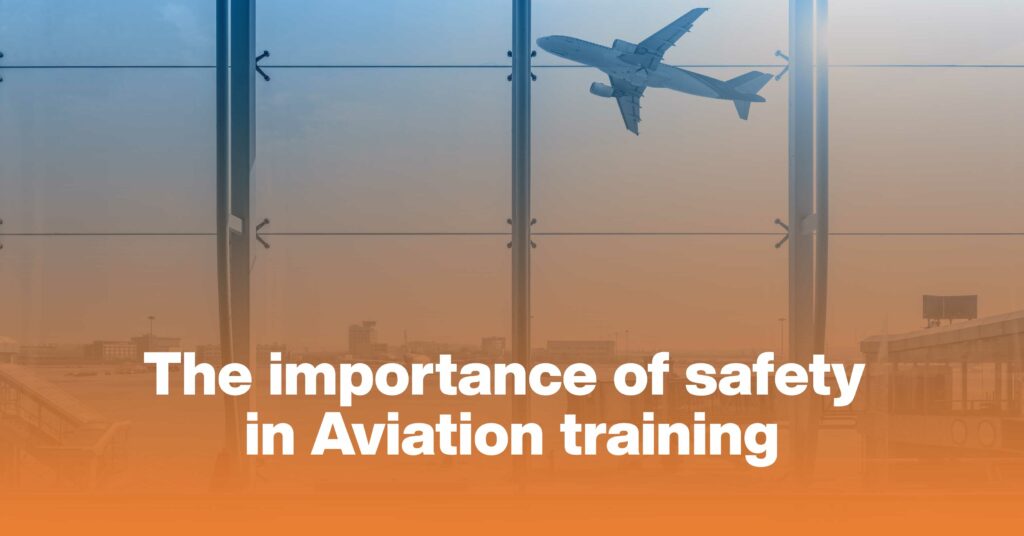Aviation training is an essential part of preparing pilots and aviation professionals for safe and successful flights. However, it is crucial to recognize the importance of safety in aviation training, as it plays a vital role in ensuring the well-being of both trainees and passengers. In this article, we will explore the significance of safety in aviation training, provide tips on how to maintain safety during training, and discuss how Garg Aviations can help in this pursuit.
The Significance Of Aviation Safety
Aviation safety holds immense importance in training programs for several reasons:
1. Protecting Lives and Assets
In the aviation industry, safety is paramount. By prioritizing safety in training, we ensure the protection of human lives and valuable assets such as aircraft. Effective training programs instill a safety-centric mindset in trainees, equipping them with the skills and knowledge to avoid potential risks and prevent accidents.
2. Building Confidence and Competence
Safety-focused training boosts trainees’ confidence and competence in handling various aviation scenarios. Knowing that safety protocols are in place and adhered to instills a sense of assurance and allows trainees to focus on honing their skills. This, in turn, leads to increased proficiency and better decision-making abilities.
3. Mitigating Risks and Liability
Training programs that prioritize safety help mitigate risks and limit liability for aviation organizations. By ensuring that proper safety procedures and practices are followed, organizations can minimize the likelihood of accidents, which can have severe legal and financial consequences. Prioritizing safety in training significantly reduces the potential for errors and accidents, protecting both individuals and the organization.
Tips To Maintain Safety During Aviation Training
To maintain safety during aviation training, it is crucial to follow these essential tips:
1. Adhere To Standard Operating Procedures (SOPs)
Trainees must familiarize themselves with the specific SOPs provided by their training program. These procedures outline the correct and safe way to perform various aviation tasks.
By strictly adhering to SOPs, trainees can minimize the likelihood of errors and maintain safety throughout their training.
2. Practice Effective Communication
Effective communication is key to aviation safety. Trainees should actively communicate with their instructors, fellow trainees, and ground support staff to ensure clear and accurate exchange of information. This helps in coordinating activities and addressing any potential safety concerns promptly.
3. Stay Vigilant And Alert
Maintaining a high level of vigilance and alertness throughout training is vital for safety. Trainees should remain attentive to their surroundings, anticipate potential risks, and proactively address any safety issues. Developing situational awareness is crucial to identifying and mitigating hazards effectively.
4. Embrace Continuous Learning
Safety in aviation training requires a commitment to continuous learning and improvement. Trainees should actively seek feedback from instructors, reflect on their performance, and strive to enhance their skills and knowledge. By embracing continuous learning, trainees become more proficient and better equipped to ensure safety in their future aviation endeavors.
How Garg Aviations Can Help?
Garg Aviations, a leading aviation training provider, understands the importance of safety in aviation training. They prioritize safety at every stage of their training programs, adhering to international standards and regulations. Garg Aviations employs experienced instructors who emphasize safety throughout the training process, ensuring that trainees develop a strong safety-centered mindset. With state-of-the-art facilities and rigorous safety inspections, Garg Aviations creates an environment that promotes safety while providing comprehensive training. Trainees at Garg Aviations not only learn the necessary skills but also develop a deep understanding of the importance of safety in aviation. This holistic approach prepares them to become competent and responsible professionals in the aviation industry.
Frequently Asked Questions
1. How do aviation training programs prioritize safety?
Aviation training programs prioritize safety by incorporating comprehensive safety protocols, adhering to international standards and regulations, and employing highly experienced instructors who emphasize safety throughout the training process.
2. Are aviation training facilities regularly inspected for safety compliance?
Yes, aviation training facilities undergo regular inspections to ensure compliance with safety regulations. These inspections are conducted by regulatory authorities and focus on various aspects such as infrastructure, equipment, training procedures, and emergency response plans.
3. How do aviation instructions emphasize safety during training?
Aviation instructors emphasize safety during training by incorporating safety briefings, demonstrations, and hands-on practice of safety procedures. They also encourage active communication, continuous learning, and the development of a safety-centric mindset among trainees.
4. What is the “sterile cockpit” rule, and why is it important?
The “sterile cockpit” rule requires pilots and aviation professionals to refrain from non-essential conversations and activities during critical phases of flight. This rule exists to ensure that cockpit crew members remain focused on their essential tasks, minimizing distractions and reducing the likelihood of errors or accidents.
5. What should I do if I encounter an unsafe situation during aviation training?
If you encounter an unsafe situation during aviation training, it is essential to follow the established safety procedures and immediately report the incident to your instructor or relevant authorities. Do not hesitate to prioritize your safety and the safety of others by taking prompt and appropriate action.
Conclusion
The importance of safety in aviation training cannot be overstated. Prioritizing safety not only protects lives and assets but also builds confidence, competence, and mitigates risks and liability. Remembering essential tips such as adhering to SOPs, effective communication, staying alert, and embracing continuous learning are crucial for maintaining safety during aviation training. Choosing a reputable training provider like Garg Aviations ensures a strong emphasis on safety throughout the training journey. By prioritizing safety, we can create a culture of excellence in aviation training, setting the stage for safer skies and successful aviation careers.

